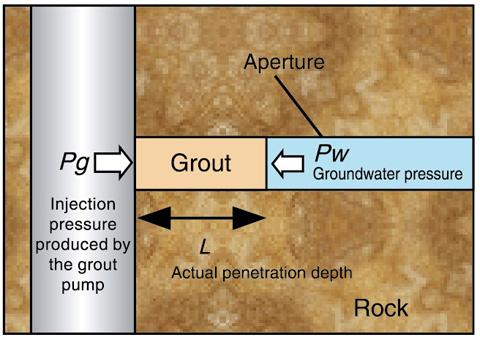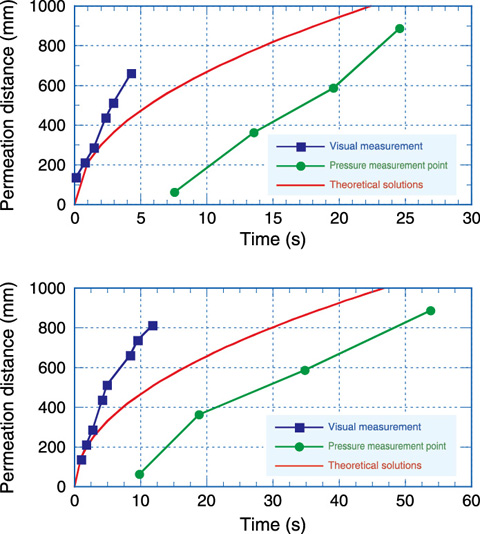
Fig.3-9 Flat parallel plate apparatus (top view)

Fig. 3-10 Grout flow in an aperture

Fig.3-11 Results of modeling and laboratory tests of penetration
Grouting open apertures in a rock mass improves the strength of the rock mass and limits the ingress of groundwater during the construction and operational phases of facilities for the geological disposal of radioactive waste. Ordinary Portland cement is conventionally used for grouting, but which can generate a high pH plume that has generally uncertain effects on the performance of other facility components and of the rock mass. A low pH cement grout material and appropriate grouting techniques are therefore being developed to mitigate these effects. Assessments of penetration depth are particularly important because they can be used to provide information for long-term safety assessment.
In the current study, the grout penetration depth of a low pH cementitious material was tested in the laboratory using 1D flat parallel plate apparatus and compared with predictions using the Gustafson & Stille model (Fig.3-9). Fig.3-11 shows that the modeling predictions are in agreement with the results of the laboratory tests: the evolution of the penetration distance solved theoretically according to the model was approximately consistent with that of the average distance measured visually and by pressure gauges at the observation points.
The model provides the average distance of injected grout in the aperture (Fig.3-10). Grout material is simulated as a Bingham fluid, which exhibits a nonzero (i.e. positive) yield strength on the stress vs. rate of strain relationship. Bingham fluids exhibit heterogeneous flow velocity distributions in the cross section of the aperture; in particular, the flow velocity is slower closer to the wall of an aperture.
The current study was conducted in FY2008 as a part of the “Project for Grouting Technology for the Geological Disposal of High Level Radioactive Waste” funded by the Ministry of Economy, Trade and Industry (METI).